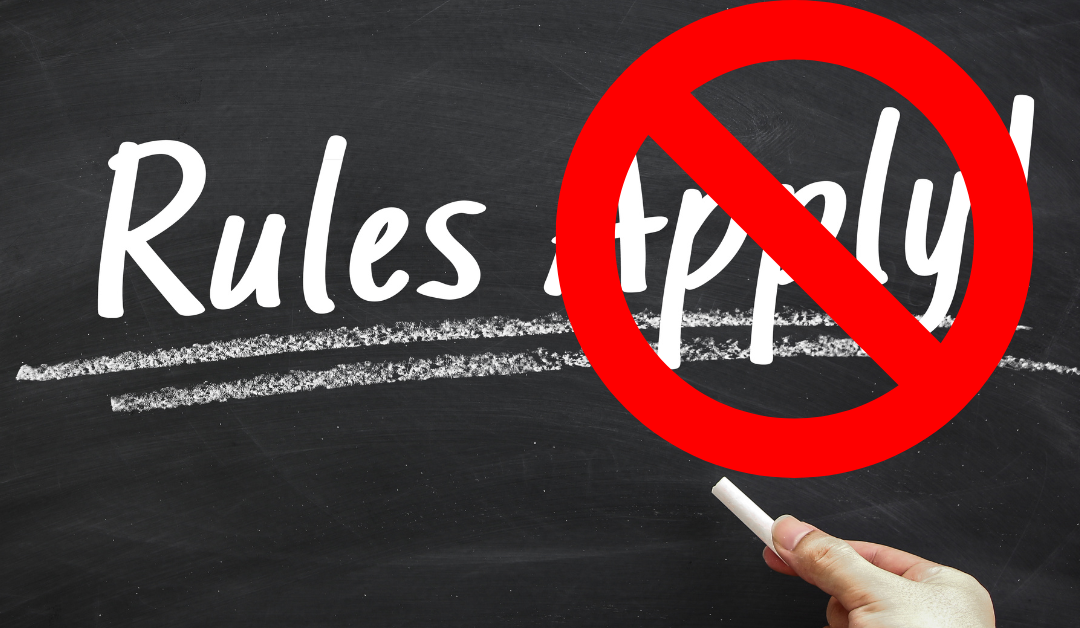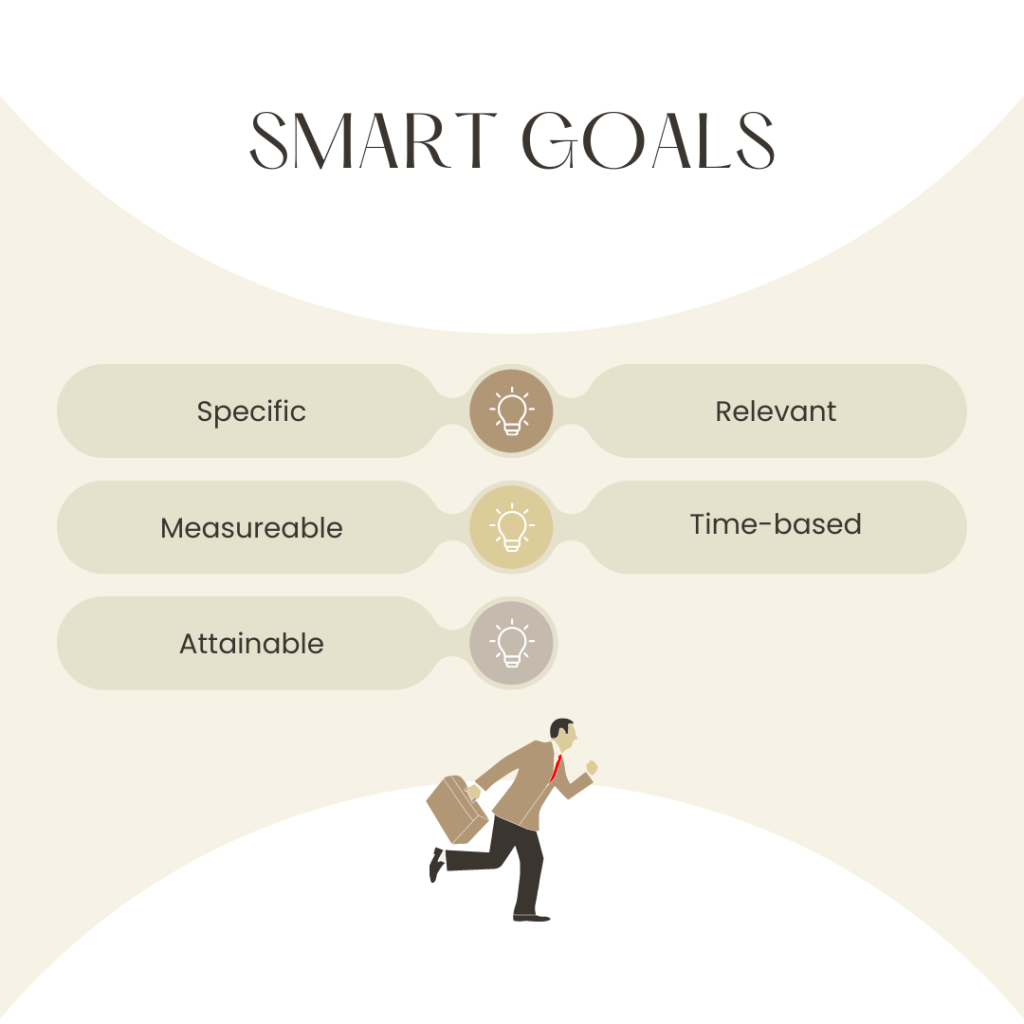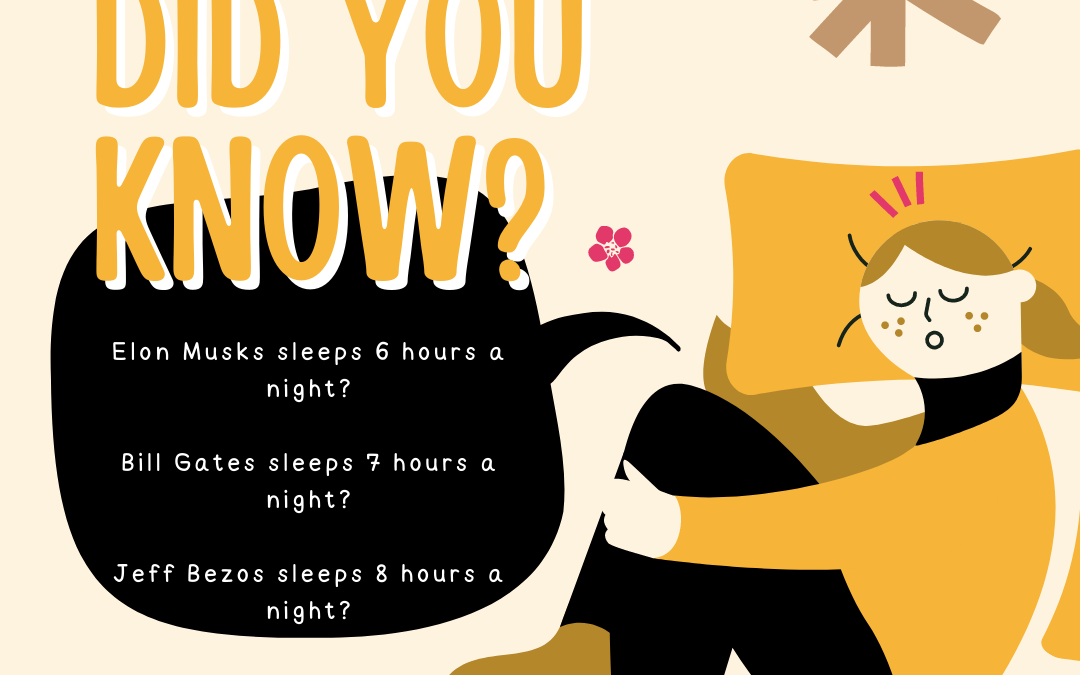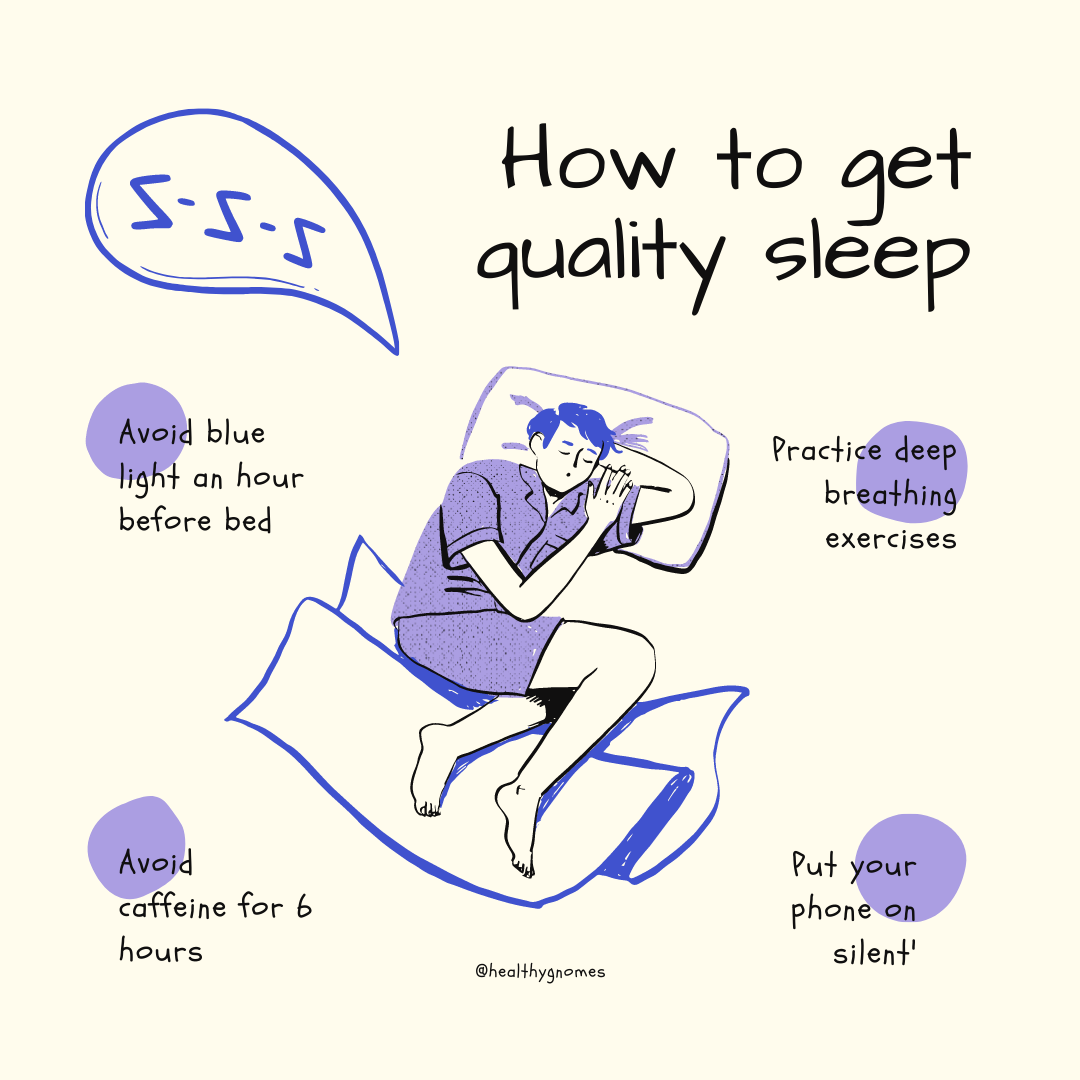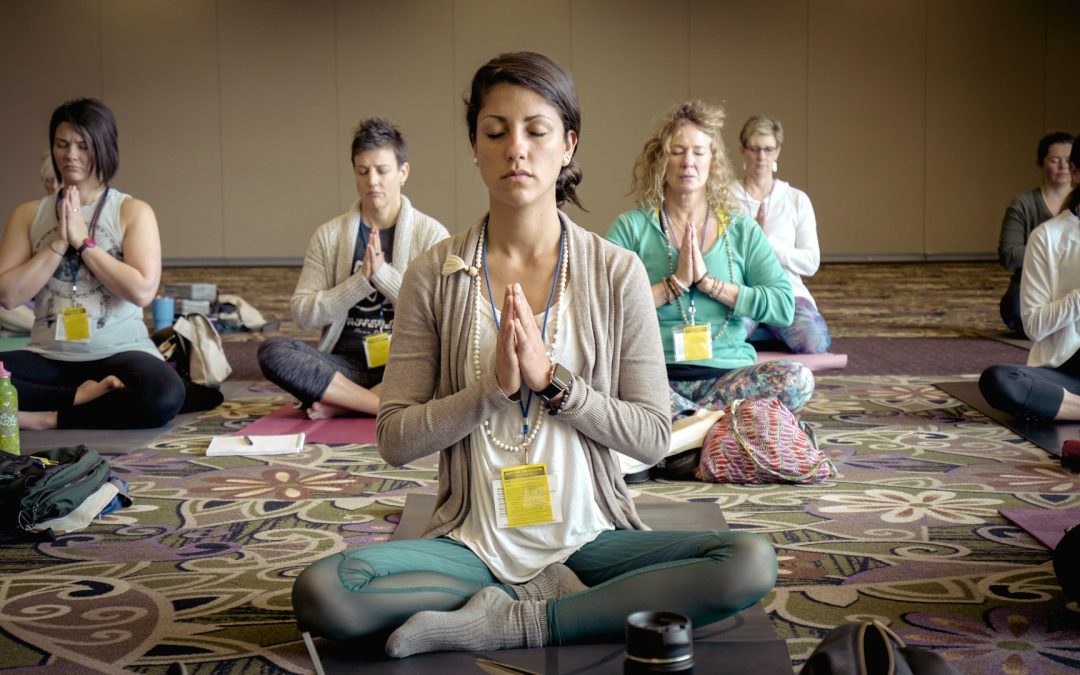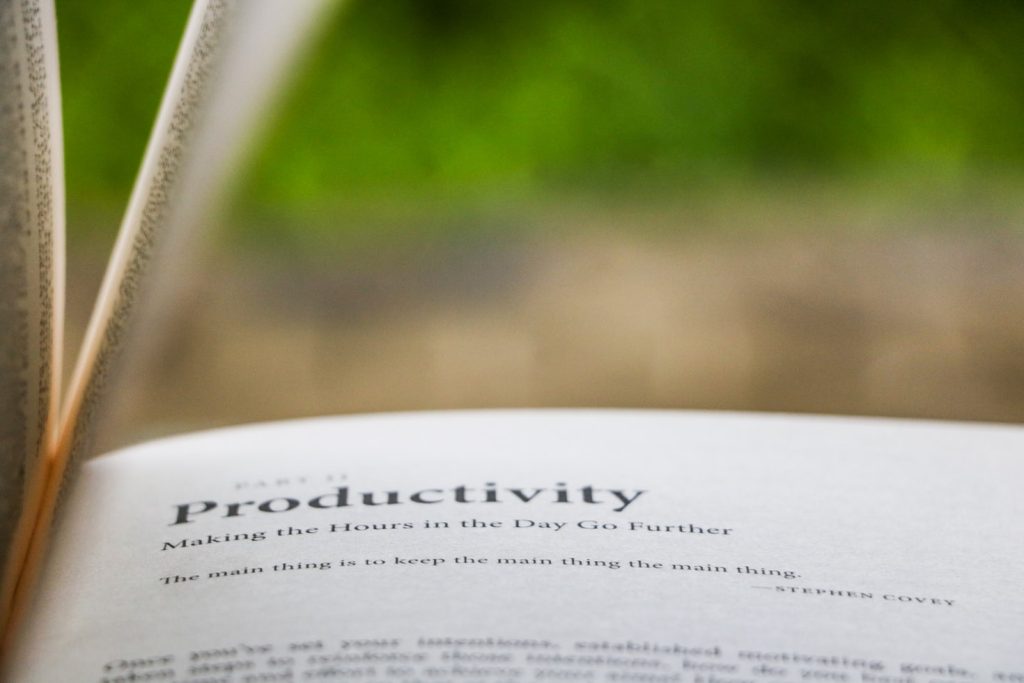
by Michael DeFelice | Last updated Jul 23, 2022 | Fitness |
Cheat exercises are something that not many people are talking about in the fitness world. AND, we do mean “cheat exercises” and not chest exercises, which was the only thing I could really find when trying to research this topic at first.
Warning Before Doing Any Cheat Exercises
Form is essential when exercising because you can hurt yourself if you compensate with other muscles, too much. If you’re planning to perform cheat exercises, please be careful and know that we’re not responsible if you hurt yourself.
What are Cheat Exercises?
Cheat exercises are when you perform any type of exercise without perfect form to try and push past your own limits. You might use momentum to your advantage on cheat reps, and you’re going to get a lot of hate on Instagram and social media for it.
You’ll see a lot of unfit people telling the world’s strongest people:
- Hey, you’re doing that wrong.
- Terrible form bro.
- Etc.
Form is important, and you don’t want to use cheat reps all the time, but they can be an important tool in your arsenal to promote muscle growth and strength gains.
Extended Set Cheats AKA Cheat Reps
Cheat reps work something like this:
- Perform the set with good form
- Keep pushing the set beyond your limit (when form gets bad)
- Push past your normal point of failure using momentum or by engaging other muscle groups
Performing strict bicep curls is a prime example of a time when you might use cheat sets. You’ll perform, let’s say 8 reps at whatever rep range and you’ve been stuck in a plateau for quite a while.
After a few weeks of struggling to break through the plateau, you decide to use cheat exercises. When you hit rep 8 and can’t perform another rep, you use momentum on the last repetition to bust out another rep or two or three.
You’re fatiguing the muscle further, and when the muscle fibers heal, they’ll be stronger.
Still not understanding?
Let’s assume that you’re performing seated rows. You’re doing amazing, your back is on fire and you feel like that’s It, you can’t perform another rep in isolation. You might start engaging your biceps more and breaking out of isolation to engage more muscles and get the extra rep or two in for the exercise.
That’s a cheat rep.
However, there is also another type of cheat exercise to know about.
Cheat Exercises with Heavier Weight AKA “Heavy Cheat”
Lifting heavy builds more muscle, and if that’s your goal, you need to push your limits in the gym. You can perform cheat exercises with heavy weight, but you need to be very careful and do them at your own discretion because you can hurt yourself in the process.
The idea is simple:
- Form is less strict
- Multiple accessory muscles are engaged
- You perform one or two reps
However, if you’re lifting heavy and beyond your normal capacity, this is often a discouraged training method due to the high risk of injury. In addition, anyone who has had injuries will want to avoid cheat exercises with heavy weight.
A prime example of cheating with heavy weight is doing a deadlift.
People that are cheating will jerk their back and force the weight up. Unfortunately, this is also a great way to destroy your back and be in pain for the rest of your life.

Why Cheating Get a Bad Name?
So, cheat exercises can be good and bad, but why do they have a bad name? Well, the main reason is that cheating like this is often done by beginners trying to look good in the gym and leads to injury.
You can cheat on some exercises more safely than others, and keep this in mind when trying this method.
Never Try Cheat Exercises for:
- Barbell bench press
- Barbell rows
- Calf raises
- Chest flys
- Deadlifts
- Leg curls
- Shrugs
- Squats
- Upfront rows
- Dips
- Preacher curls
- Skull crusher
- Chin-up
If you do cheat exercises with these and a few others, you’re really risking serious injury, especially in your back, which can lead to months out of the gym and years of pain.
Exercises Where Cheating is Less Risky
- Dumbbell curls
- EZ-bar curls
- Lat raises
- Lat pulldown (NOT behind the neck)
- Seated leg press
- Tricep pushdown
Also, if you plan on going into any competitions or to break records, the judges will disqualify you for cheating.
Tips When Performing These Exercises
If you’re doing cheat reps or heavy cheats, be sure to follow a few tips below:
- DO NOT mess around with your lumbar spine. If your spinal position is compromised at all, you risk hurting your back, which absolutely will set you back.
- PREPARE for the eccentric part of the movement, because you will need to control the weight you lift.
- FINISH with a cheat rather than start with it. 99% of what you do during your session should be with perfect form and muscle isolation. Just if you’re going to perform cheats, be sure that they’re the finisher for the muscle group you’re working.
How Often Should You Do Cheat Exercises?
What most people recommend is that you try making your gains the natural way. Perform your sets using strict form, add weight over time and break those plateaus.
However, it’s not recommended to:
- Perform cheat sets for more than 1 – 2 sets per body part
- Perform heavy cheats for more than 1 – 2 sets per body part
It’s often better to incorporate other tweaks to your workout to try and find ways to reach your goals without trying to cheat. The risk of injury is high, and if you’re trying to cheat on the wrong exercise, you can cause some serious damage to your body.
“Dumb cheating” gets you hurt, and “smart cheating” may help you add on a little more muscle and boost your strength if you’ve hit a sticking point and haven’t been able to bump the weight up in months.
Cheat exercises and reps will help you overload your muscles, breaking out of your typical isolation reps and allowing other muscles to assist on the rep.

by Michael DeFelice | Last updated Jul 17, 2022 | Health and Wellness |
We all have goals that we work towards one day and kind of push off over time. Perhaps you really don’t want to be fit or learn a second language. But if you’re like me, the biggest issue is learning how to stay focused on goals.
Motivation is fleeting, and while you may feel filled with energy and excitement one day, the next, you may find yourself wanting to sleep in just a little longer.
And before you know it, months pass by and you’ve done nothing to reach your goals. You didn’t follow a plan or even reach your first monthly milestone.
So, what can you do?
We’re going to outline the exact steps you can take to start staying focused on goals and priorities to start living your best life.
How to Stay Focused on Goals? Start With the Basics First
Before moving into any tips or recommendations, you need to do a little preliminary work first. I remember banging my head against the wall and asking, “how do I stay focused on my goals?” And if I had just listened to the basic recommendations of others, I would have reached my goals faster.
The basic recommendations, include:
Learn What Motivates You
What motivates you?
- Money
- Knowledge
- Health
- Impressing others
- What?
Every goal has a motivation. For example, do you want a new home because it will be closer to the city or offer you peace and quiet? Or do you want a new home to impress others? Are you going to the gym to improve your health or impress someone else?
If you reach your goal, what will it mean to you?
Goals tend to be less realistic when they’re for vanity or for something short-term. For example:
- You want to get fit to impress someone is less likely to become a reality than…
- You want to get fit for yourself, feel better, have more energy, reduce health risks, etc.
Dig deep into what motivates you when setting a goal because you want the goal to be something that you can achieve.
Write Down Your Goals
Writing is a powerful tool. When you think “I want to reach this goal” in your mind, it’s not quite the same as writing it down on paper.
Why?
I have no idea. There’s a psychology behind writing down your goals. It makes them real.
However, instead of saying “I am going to lose 50 pounds,” it’s better to start with SMART goals.

What are SMART Goals?
SMART is short for:
- Specific
- Measurable
- Attainable
- Relevant
- Time-based
So, your goal is to lose 50 pounds. In this case, you may want to write down the following:
- S: I’m going to exercise daily.
- M: I will use an app to track my progress.
- A: I will aim to lose 1 pound per week.
- R: I want to reach my goal to fit into my old clothes, feel healthier and lift more weight. I want energy and to feel good about myself.
- T: I will lose the weight in one year for my high school reunion.
When it comes to time, you want to be realistic with your approach. How much time do you have to dedicate to your goal? What would a realistic time span be to reach your goal? Don’t ask your friends on Facebook or get inspired by someone selling a course on Instagram.
Really do your research here to know what’s attainable or you’re going to set yourself up for failure.
Once your goals are written down, it’s time to focus on ways to stay focused on goals so that you can actually reach them.
7 Advanced Ways to Stay Focused on Goals
1. Start With Challenging Goals
One study found that you’re 90% more likely to reach a goal when it’s challenging. Specific, challenging goals push us to be better people, and they’re something that you never want to underestimate.
If your goal is too easy, shoot for the moon and try again.
Want some motivation?
LES BROWN Self Commitment (SHOOT FOR THE MOON)
2. Create Milestones
Goal pursuits should be broken down into milestones, especially if you have lofty goals. For example, if your goal is to wake up early tomorrow, set the alarm and do it. However, if you want to become fluent in Spanish, you’re going to need to create milestones.
For example:
- Learn 500 words
- 1000 words
- 1500 words
- 2000 words
- Start reading kid’s books in Spanish
- Work with a tutor to practice speaking
And continue on with your milestone. There’s no trick on how to stay focused on long-term goals, but when you break down your goal pursuits, you’re going to feel satisfaction along the way.
Satisfaction creates a mental shift that allows you to continue working towards key goals.
3. Achievement-Based Motivation
There are a lot of different types of motivation. However, achievement-based motivation is something that you can will into existence and use to trick your brain into reaching your goals. For example, let’s say that you have measurable goals, such as landing 10 clients for your business.
Well, you can pat yourself on the back by:
- Treating your family to dinner when you land 5 new clients
- Going on vacation when you reach your goal
- Etc.
Achievements deserve to be recognized.
4. Work With a Coach
You may be ultra-independent and the thought of working with a coach may cause you to turn your nose up to the idea. However, if you’re not reaching your goals, there are literally coaches or tutors for everything.
Try and find a coach that has reached the goal that you want to reach.
You’ll find coaches for financial goals, weight loss goals, language learning – everything. If you know that you’re not the type of person to stick to your own plans or find a way to self-sabotage yourself, hire a coach.
Plus, if you’re anything like me, you hate wasting money, so paying a coach may help you even stay focused.

5. Measure and Adjust
Passive goal setting may work for some people, but when active goal setting, you need to measure and adjust. For example, you may have 1-3 major goals, and while you made progress early on to hit some milestones, progress may have stalled.
Don’t make the mistake of following a failed approach and losing time.
Instead:
- Measure your progress
- Adjust what’s not working
If you’re not tracking every facet of your plan, you won’t know if you’re inching closer to your key goals. Tracking goals over time allows you to make the adjustments necessary to continue on your path to success.
6. Use Time Chunks When Possible
Laser focus over a long period of time is difficult. Our attention spans are short, just 8 seconds – 15 minutes or more, and it’s easy to get stuck on time wasters, such as scrolling endlessly on Instagram.
The truth is that attention span depends on individual tasks and the individual.
If you’re not able to maintain your attention span, you may want to consider breaking tasks into chunks. For example, when trying to learn a language, opt for 10-20 minutes or 15-20 minutes of hyper-focused study time each day.
Are you working out?
Shut the phone off and hustle for however long you need. You can’t break every task into chunks, but if you can’t maintain your focus, using time chunks is a great way to maintain deep focus for longer.
7. Create a Plan
One of the key ways to stay focused on goals is to create a plan. Your plan should be focused on time management and include:
- Scheduling out the daily habits you’ll follow to reach your goal.
- To-do lists, which allow you to visualize goals and work towards achieving them one step at a time.
Your plan should be realistic and achievable. It’s imperative that the plan you create be so well-planned that if you follow it, you’ll reach your goals. Businesses use this type of in-depth planning to grow and build their brands. Often, it’s the foundation of the initial business plan that leads to success.
You need to create this foundation, too.
Plan out your journey for each task completion to reach your goals.
An ultimate goal should consist of a bunch of realistic goals. If you follow the tips above, you’ll find that you’ll reach your milestones or “mini goals” over time, which will keep you motivated and free from pesky distractions.
How To Stay Focused on Goals and Not Get Sidetracked With Friends
A social life is something that is so important in life. You want to reach your goals while also making memories with other people. Studies show that quality social relationships have short- and long-term effects on health.
Poor social relationships can impact:
- Health habits
- Mortality
- Physical health
- Mental health
However, reaching your goals is also something that you should never neglect because it’s also a major mental boost.
So, what can you do?
Plan for disruptions. If you know that your friend Jenn is coming to town next week, plan to have a day off with her. However, if the social disruptions and friends become too time-consuming, you may also want to:
- Schedule the tasks you need to perform to reach your goals early in the day
- Say “no” to friends on occasion to have time to reach your goal
True friends will respect the time and hustle that you’re putting in to reach a goal. You may not be able to spend every night out eating with your friends if you want to reach your goal, but you should try to have a healthy social life with friends.
Make memories and have a personal life, but also put your goals first.
How do I stay focused on my goals? Will power. Motivation is going to fade. Trust me. You might be ultra-excited to go to the gym four or five times a week, but when you don’t see progress overnight, the only thing dragging you to the gym is your own willpower.
The same can be said for virtually anything.
Nothing comes easy in life. Staying focused on goals and priorities takes a lot of hard work and dedication. But once you learn how to stay focused on goals, that’s when you create the best version of yourself.

by Michael DeFelice | Last updated Feb 19, 2023 | Health and Wellness |
Everyone wants to maximize their time. There’s an obsession with The 4-Hour Workweek, and the mega-wealthy often promote getting less than eight hours of sleep per night. But if you’re like me and enjoy your sleep, you’re probably wondering how to get less sleep and feel better?
If I sleep less than six hours, I might feel energized at first and then crash midday.
However, there are ways for you to improve the quality of your sleep so that you don’t suffer a midday crash, as many people do.
Let’s see how to get better and less sleep so that you can maximize your day.

Sleep Duration of the Wealthy
You should be listening to researchers on the amount of time to sleep. However, some of the most successful people in the world have shared their sleep habits, which is quite interesting:
- Elon Musk told Joe Rogan he sleeps about six hours per night because anything more and he feels less productive.
- Bill Gates now sleeps 7 hours per night because he feels happier and more creative.
- Jeff Bezos states he sleeps eight hours per night because he has more energy.
It’s worth noting that Gates used to think that sleeping a lot was a lazy habit, but he says he was obsessed with work at the time.
While this list can be drastically longer, these three individuals are often seen as the most successful in the world and sleep 6 – 8 hours per night. You may hear that some people sleep four hours or less per night, but this habit can lead to severe sleep deprivation.
How to Get Less Sleep and Feel Better
If you’re sleeping 7 – 8 hours per night, this is a good range and not something that you should strive to change. Squeezing in an extra hour of work per day and feeling exhausted is likely to hamper your productivity more than it helps it.
There are also some serious risks to under-sleeping, which we’ll get into in more detail shortly.
So, why do you function better with less sleep sometimes? Quality of sleep is important, and a person sleeping in the middle of a quiet forest will likely have a much higher sleep quality than someone trying to sleep with noise all around them.
Quick Lesson on Sleep Stages
When you sleep, you’re going to sleep in one of five stages. The stages of sleep are:
- Wake
- N1
- N2
- N3
- REM
You’ll sleep in cycles, and you can really consider N1 – N3 as simply non-REM sleep. REM, short for rapid eye movement, is a short period of sleep.
In fact, REM sleep is when you’re dreaming and isn’t actually a restful sleep stage. Instead, REM sleep is rather close to your wake stage of sleep. Of course, all stages of sleep are important, but deep sleep seems to be associated with feeling rested.
In this case, N3 is the deepest, non-REM sleep that you can obtain. Sleeping in N3 allows for:
- Body repairs
- Immune system strength
- Bone building
- Tissue regrowth
- Etc.
Hacking Your Way to Deep Sleep
Unfortunately, you can read about how to sleep less and better, follow recommendations on things to do before bed and that’s it when trying to get better sleep. However, one study does suggest that through auditory stimulation, there may be ways to:
- Improve N3 sleep quantity
- Increase sleep depth
- Improve next-day sleep
And it’s suggested that with the right auditory environment, it may be possible to improve sleep quality even when sleep duration is lower.
With that said, researchers have not released any audio to follow to achieve these goals. We have dug up a few studies on tips that can improve sleep:

10 Sleep Hacks to Improve Sleep Quality
If you want to sleep less and better, you may want to try the following:
- Exercise during the day but not too close to sleep
- Avoid blue light, like the one from your phone for an hour before bed
- Keep bright lights out of your room (blackout curtains help)
- Reduce caffeine intake and do not drink caffeine six hours before bed
- Reduce your alcohol consumption
- Avoid liquids before bed to lower the risk of having to get up in the middle of the night
- Put your phone on silent to avoid distractions
- Take a hot bath
- Meditate
- Practice deep breathing
You’ll also want to read our article on how to get to bed on time because maintaining a routine will make it easier to get the sleep you need every night.
Tossing and turning or having trouble falling asleep? Learn how to wind down for the night.
How Much Sleep Do I Really Need?
Sleep changes as you age, and a general rule of thumb is that you need the following amount of sleep based on your age:
- Newborns need 14 – 17 hours of quality sleep
- Infants need 12 – 15 hours of sleep time
- Toddlers need 11 – 14 hours of sleep per night
- Preschoolers need 10 – 13 hours of regular sleep
- Ages 6 – 13 need 9 – 11 hours of sleep per night
- Ages 14 – 17 need 8 – 10 hours of sleep
- Ages 18 – 64 need 7 – 9 hours of sleep
- Ages 65+ need 7 – 8 hours of high-quality sleep

What Happens If I Don’t Sleep Enough?
Sleep experts state that if you don’t have a night of quality sleep, you’re at risk of sleep deprivation, which can increase the risks of:
- Getting sick
- Early death (here)
- Anxiety
- Depression
- Obstructive sleep apnea
- Overeating
- High blood pressure
- So much more
Changing your sleep patterns will help ensure that you lower these risks. Poor quality sleep, even if you’re awake for more hours during the day, can have a long-lasting, negative impact on your well-being.
FAQs
Why Do I Function Better With Less Sleep?
Sleeping less and feeling better may be due to:
- Better sleep quality
- Gene mutation (more on this below)
If you’re oversleeping, defined as more than 9 hours of sleep a night, it may not be good for your health. Research suggests that oversleeping may be a sign of an underlying problem – so you may want to schedule a checkup with your doctor.
How to Sleep Less Than 4 Hours?
Extremists seem to hack their way to four hours of sleep at night or less. If you go on social media, you’ll find a lot of people boasting about their lack of sleep. However, there is a form of sleep called Polyphasic sleep, which refers to sleeping in more than two segments per day.
For example, a person may:
- Sleep 4 hours from 11pm to 3am
- Take a nap from 6am to 6:30am
- Take a nap from 12pm to 12:30pm
- Take a nap from 5pm to 5:30pm
You’ll find quite a few variations of this sleeping method, such as the Dymaxion schedule, which includes 4, 30-minute naps every six hours for a total of 2 hours of sleep per day.
There’s also the Uberman schedule of napping for 20 minutes every 4 hours.
A few things that are worth noting here are no studies indicating that your body will adapt to this extreme sleep deprivation.
In fact, a 2017 study found that following a Polyphasic sleep schedule led to the same side effects of sleep deprivation in some participants, including:
- Anxiety
- Depression
- Heart disease
- Stroke
- Sleep apnea
- Diabetes
- High blood pressure
- Etc.
You may feel great for freeing up time in your day by not sleeping, but the long-term risks can also be severe.
Is It Better to Sleep 6 or 7 Hours?
Ideally, you’ll sleep within the recommended hours for your age group, as outlined in the section “How Much Sleep Do I Really Need?” In most cases, sleeping 7 hours per night is ideal, even though Elon Musk sleeps around six hours per night.
Your body may need less sleep if you have a specific gene mutation.
Scientists have uncovered a gene called ADRB1, which if you have, you can sleep less than seven hours a night without any consequences.
What is Gene ADRB1?
A study from 2019 suggests that a genetic mutation of the β1-adrenergic receptor gene allows people to:
- Sleep less
- Keep neurons active during REM
- Promote wakefulness
The genetic mutation is called ADRB1. Essentially, the mutation shows the important role of these receptors in wakefulness and sleep regulation. And, according to current research, the gene allows for less than 6.5 hours of sleep without any noticeable side effects.
You can read up on hacks and tricks on how to get less sleep and feel better, but your body truly needs sleep to function correctly. In the short-term, you may not notice a significant difference when sleeping less, but the long-term risks are concerning.
Set aside time for adequate sleep: you deserve it.

by Michael DeFelice | Last updated Mar 18, 2023 | Health and Wellness |
Adults are meditating more. In fact, a 2017 survey found that the number of adults that meditated in a previous 12-month period rose from 4.1% in 2012 to over 14.2% in 2017. If you want to start on your own path to mindful living but can’t seem to find the motivation, the benefits of group meditation may help.
Why?
The science behind meditation is promising and you don’t need to spend a dime. You can meditate with friends, family or, if you wish, you can also go to an official meditation group in your area that will cost money.
But today, we’ll outline why group meditation may be good for you (it’s definitely not for everyone). However, if the practice of meditation is something you’re interested in but you can’t seem to fit it into your daily rituals, regular practice in a group setting will definitely help.
7 Benefits of Group Meditation
1. Group Meditation Keeps You Motivated
A lot of people practice mindfulness and meditation on their own. For me, personally, I prefer to meditate outside of a group setting. I find groups make me feel self-conscious, and then I rely too much on the group.
However, studies on doing activities in groups indicate that a group setting can lead to:
- Intrinsic motivation
- Greater consistency
- Enhanced social skills
- Boosted engagement
Stanford conducted a study on motivation, which shows how group exercises work well. Many of these will translate to group meditation benefits, although the study was not based on meditation.
Note: Group meditation may or may not be for you. If you find that you’re 100% reliant on the group and if the group disbanded you wouldn’t meditate on your own, this can be detrimental to your practice. For example, many people do this with the gym. They’ll find a partner, stay motivated and never go when their partner isn’t there. Don’t become too reliant on one person as the reason for attending a mindfulness meditation group.
2. Meet Like-minded Friends
Socialization is another reason to join in group activities. If you want to expand your friend circle or get to know like-minded people in your area, group meditation may be a good option for you.
However, there are a few points to remember here:
- Don’t try talking to anyone in the middle of the class
- Get to the meditation early if you want to mingle
- Be mindful that some people may not be there to socialize
Finally, we’re going to go deeper into the benefits of group meditation to see how meditation can help your emotional and physical health.

3. Reduce Stress Levels
Stress is a part of life. Right? If you’re alive, there’s always some sort of stress each week. Perhaps you’re stressed about work, money, relationships, or someone being sick – there are many reasons to be stressed.
However, did you know that meditation reduces stress?
In fact, a mindfulness-based meta-analysis of 209 studies found that meditation can help improve quality of life by significantly reducing:
- Stress
- Anxiety
- Depression
With that said, don’t expect to experience this benefit immediately during your first group session unless you know how to meditate properly. Often, you’ll meditate for the first time and fall asleep, or you may start worrying about your focus, which is jumping to everything from what you’re going to eat for dinner to work.
If you want to reduce your stress by meditating, be sure to give it multiple sessions.
You won’t instantly feel the weight of the world lift off of your shoulders after a single group meditation. But, over time and with weekly or daily meditation practice, your stress levels will eventually fall.
4. Lower Your Blood Pressure
One of the main benefits of meditation is reducing blood pressure. You can achieve this through multiple meditation styles, but mindfulness meditation works exceptionally well for lowering blood pressure.
- 2012 review found that in people with high blood pressure, meditation could reduce both SBP and DBP.
- 2019 study involving 2 hours of meditation each week for eight weeks found that participants who meditated had lower DBP, resting BP and SBP levels.
We’re not saying that you’ll avoid heart disease or a heart attack by meditating, but you can reduce your blood pressure and stress.
In fact, if you read through the studies linked above (please do, they’re great resources), you’ll find that there are small or modest reductions that researchers state are meaningful.
5. Learn How to Meditate With a Leader
If you’re just learning, join a class that is being taught by a meditation expert. Many classes are thrown together by friends or someone that likes the aspects of meditation but isn’t an expert.
And there is nothing wrong with these classes and they are many people’s first meditation experience.
However, if you’ve never taken meditation courses before or need a little extra guidance, a group meditation class guided by an expert is ideal.
These professionals can:
6. Boost Your Productivity
If you have trouble staying focused at work or in your general life, meditation can help. Oftentimes, people meditate to:
- Relieve stress
- Blast away anxiety
- Clear their mind
And when you’re not stressed or anxious, you’ll be more productive. However, you may want to try transcendental meditation if you want to be more productive. Studies show that this form of meditation works well for productivity and also helps people relieve job tension and anxiety.
One thing to note is that regular meditation is key to enhancing your productivity.
Don’t expect your productivity to soar after one or two meditation sessions.
7. Blast Away Anxiety
Do you have anxiety? If so, you’re not alone. 40 million people in the US alone have anxiety. Meditation has been thoroughly studied for its impact on anxiety.
A 2010 meta-analysis of 39 studies found that mindfulness meditation provided moderate anxiety relief in people that didn’t have mood disorders. However, individuals who entered the studies with mood or anxiety disorders experienced a much higher rate of anxiety reduction.
If you have general anxiety disorder (GAD), this 2013 study is what you want to read. Researchers found that in people with GAD, anxiety levels fell after meditating. Stress levels also fell after meditating for this group.
What About Online Group Meditation Benefits?
Online group meditation also offers the same benefits. In fact, if you can’t find the time to join a group near you, don’t want to deal with the traffic or simply rather try meditating online, you should.
A few of the great benefits of an online meditation group are:
- Many groups are free
- Join groups from leaders worldwide
- Classes at varying times of the day and night
- No need to drive or deal with traffic
And, you’ll also experience the same great group meditation benefits listed above from the comfort of your own home. That’s the magic of meditation: you can meditate wherever you are in the world.
If you want to experience the benefits of group meditation, join a local class, lead a group meditation class yourself or attend one online. And if you have friends interested in joining a meditation session, start your own group among friends.
Together, you’ll experience the effects of meditation while strengthening your friend circle in the process.
PS: Group meditation is just one method of meditation. You can find dozens of different forms to practice, including two which we recently wrote about: mantra meditation and candle meditation.

by Michael DeFelice | Last updated Mar 18, 2023 | Health and Wellness |
Candle gazing, or candle meditation, is a peaceful, almost surreal way to meditate while staring at the flame of a candle. If you’re ever stared at a fire and become lost in a type of trance, this is the same concept.
And that’s one of the key benefits of candle meditation for me.
When I place out meditation candles, I know that I will be able to focus on the flame rather than space out and fall asleep. Unfortunately, for a long time, when I tried meditating, I would fall asleep. However, my candle meditation experiences have changed that.
Candle meditation provides a focal point that keeps your attention.
Anyone interested in the benefits of candle gazing should grab a cup of coffee, and take just a few minutes to read the rest of this article.
7 Benefits of Candle Meditation
1. Improved Concentration
Concentration is difficult when you first start meditating. If you’re using visualization, a physical object or candles for meditation, you’ll find your mind wandering to other subjects: work, relationships, hunger or something else.
But, losing your concentration is okay because it allows you another time to practice on refocusing your attention.
Trataka, a form of meditation where you stare at an actual candle flame or, another, single object, is well-studied. In fact, a 2021 review of 37 papers found that this form of meditation could boost cognition.
Additionally, Trataka has been shown to help with:
- Memory (more on this below)
- Cognitive flexibility
- Response
- Selective attention
In older people, there are studies indicating that Trataka improves cognition in older adults. If you find that your cognition is slowing or your brain is pulling you in a million directions, candles for meditation may help you regain your focus and concentration.

2. Boost Productivity
Productivity is one of the benefits of candle meditation that transcends into your career. Cognitive function improves with meditation along with your brain’s ability to store information.
However, meditation also helps boost productivity by:
- Decluttering your mind so that you can stay focused on tasks for longer periods of time
- Sharpening your concentration, so you’ll be less distracted
Skilled, executive decision-making abilities also improve with meditation. If you read about some of the world’s leading business leaders, you’ll find many of them meditate. A few people known to meditate are Arianna Huffington, Oprah Winfrey, Russell Simmons, Jack Dorsey and so many others.
3. Energizes You
Meditation and energy were the focus of a 2017 study at the University of Waterloo. Researchers found that mindfulness meditation helped boost energy levels in participants.
Why?
It’s still unclear. Researchers theorize that meditation helps improve blood flow to the brain and aids in the release of endorphins.
Both may help with energizing the body and mind.
4. Calms the Mind
Ask most people why they meditate, and they’ll often respond that it helps calm the mind. In a world where mental health seems to be on a rapid decline, meditation should be sought by more people.
Meditation can help calm:
Why?
When you focus on candlelight, or any singular object, your mind has a job to do. It’s also thought that candle gazing opens up the third eye chakra, known as the internal eye, which is known for its calming effects.
Mental stability is just one of the many mental health benefits of this meditation technique.
5. Enhances Your Vision
You don’t need the best candles for meditation to enhance your vision. In fact, you can use any type of candle you wish:
- Beeswax candles
- Scented candles
- Aromatherapy candles
- Etc.
It’s crucial to choose a type of candle that doesn’t irritate your eyes. Also, opt for natural, non-toxic candles if you plan on meditating often.
Interestingly, there’s an abundance of evidence that shows this form of meditation may help prevent eye disease and even support treatment for certain eye diseases. A few of the studies and reviews worth reading on this subject are:
- 2021 trial indicates that patients may have an improvement in intraocular pressure (IOP)
- 2018 study shows a reduction in IOP or fluid pressure in the eye
However, don’t expect candle meditation to reverse blindness or cure a severe form of eye disease. Rather, the primary benefits seem to be a reduction in fluid eye pressure, which is a leading cause of blindness in people with glaucoma.
Personally, I haven’t meditated with candles long enough to verify any of these vision-related claims.
6. Helps You Sleep Better
Sleep is important. When you sleep, your body has a chance to repair and help remove toxins from the brain. Additionally, this is the time when your brain helps reorganize information that you’ve learned and store it in long-term memory.
Candle gazing aids in sleep, according to a 2020 study.
A few key points in the study that are of note are:
- It included just 29 participants – so it’s a small case study
- Participants meditated for 45 minutes for 10 days
- Insomnia severity drastically fell during the study
- Quality of sleep drastically rose
Quality of sleep is very important. If you want to have a restful sleep, Trataka meditation can help. You’ll want to incorporate breathing techniques and meditate for 45 minutes per day. This ancient technique will provide an immense form of anxiety relief, calm the mind and enhance sleep hygiene.
7. Aids in Memory and Retention
Are you the type of person that has selective memory?
You’re not alone.
One of the candle meditation benefits that attracted me the most to this practice is that it aids in both memory and retention. When you’re trying to learn a new language or going through training for your job, candle light meditation can help.
How?
Studies show that:
- Participants experienced a rise in selective attention
- Volunteers in one study experienced an increase in:
- Spatial attention
- Spatial memory
- Working memory
Why? There’s no conclusive reason why meditation improves memory. However, maybe since your brain is allowed to relax and stop focusing on a zillion tasks, it’s able to spend more time organizing and storing memories,
Candle gazing meditation is a lot of fun, and it’s an extremely peaceful way to focus your gaze. But, of course, you might find that the benefits of candle meditation aren’t what you’re looking for when meditating.
And that’s fine.
Meditation is really all about you and what works for you. Don’t like candle meditation? There are many forms of meditation that you can choose from, that are backed by scientific evidence, including: mantra meditation, vipassana meditation, kundalini meditation, pyramid meditation and so much more.
Find a form of meditation that works best for you and practice it.
